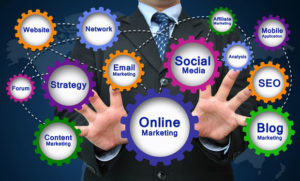
Big businesses often use big bucks to go green. Small businesses, on the other hand, haven’t a dollar to spare even for a good cause like saving the environment. Shouldn’t they just pass on the whole green scheme — at least until the economy improves? Not necessarily.
“Effective power management is a win-win for small businesses: Reducing energy consumption is good for the environment, and reducing energy-related costs is good for the bottom line,” Umesh Shaw, senior manager of product marketing at Numara Software, told the E-Commerce Times.
However, no matter how true the sage advice of ‘a penny saved is a penny earned,’ there’s no escaping the fact that money still has to be doled out on the front end in over to receive savings on the back end. Right? Turns out there are tons of things you can do to cut your costs and improve the environment without spending much money at all.
Cheapest Ways to Save the Green
Topping the list of low-cost/no-cost measures you can use to go green is a whole bunch of common sense stuff. Unfortunately, few companies actually do any of them — even something as simple as turning off computers and other electronic equipment at night.
KACE, a systems management appliance vendor, recently published a survey on green IT. Opinions of more than 500 IT professionals worldwide were collected on current green IT and desktop power management strategies. “The research shows that the majority of businesses see the importance of powering down computers to save money, but most are still hesitant to do so because of their need to ensure important patches and system updates are being applied,” said Diane Hagglund, senior research analyst for Dimensional Research and the survey’s author. “The desire is there for businesses to reduce costs and their overall carbon footprint, but actual adoption of desktop power management is still early in practice.”
According to the survey, 55 percent of small businesses do not manage desktop power usage in any way; 24 percent manage desktop power usage by giving guidance to employees instead of using technology solutions; and, 13 percent use a commercially developed solution to manage desktop power.
This failure to power down is driving costs up for SMBs. According to the U.S. Department of Energy, shutting down office equipment during “off” hours can save up to 66 percent on power consumption.
Power in Portions
The highest savings come from turning computers off at night, but if that is simply not possible for your operation, then a good alternative is sleep mode.
“Enabling the sleep mode on computers will save energy when the user is idle,” CDW Chief Technologist Vic Berger told the E-Commerce Times. “If IT departments need to conduct nightly updates, they can simply send a wake-up signal to the device at the appropriate time and then let it go back to ‘sleep’ when the maintenance is finished.”
However, don’t forget to turn off peripheral equipment too, like printers, copiers and desk lamps. “To make it easier, use intelligent power strips that turn off peripheral equipment automatically,” advises Berger. “The price points on intelligent power strips are going down, while availability is going up. Also, implementing a policy to control and monitor peripheral usage could alleviate a lot of headaches.”
Other common-sense, low-costs measures you can take to cut energy consumption include replacing traditional fluorescent lights as they burn out with new light emitting diode (LED) lights. “Because LED lights don’t emit heat, they use just one-tenth of the power draw and equate to a 20 percent longer life cycle,” explained Berger. “Additionally, LED price points are starting to decline, and the cost savings over the long term are dramatic.”
Consider also installing motion-detection lights that automatically turn lights on and off according to actual human presence; replacing equipment as needed with new Energy Star rated equipment; switching to multifunction printers to decrease the number of peripherals you are powering; and adding insulation around windows and doors.
Digitalizing for Dollars
Paper use creates a huge carbon imprint and a substantial cost for SMBs in terms of supply costs, shipping and storage. “If the United States cut office paper use by just 10 percent, it would prevent the emission of 1.6 million tons of greenhouse gases — the equivalent of taking 280,000 cars off the road,” HK Bain, chief executive officer of Digitech Systems, told the E-Commerce Times.
Consider billing your customers by email rather than by mailing paper bills. Accepting payments online also generally increases a company’s cash flow as well, since it is considerably more convenient for customers to pay online than to pay by mail.
Bain recommends using enterprise content management (ECM) technology to convert paper to electronic files. For a double-save, he recommends using ECM in a Software-as-a-Service (SaaS) form, thus cutting the need for servers in your data center too.
One more benefit: SaaS or hosted applications and software are generally cheaper to use and require no maintenance costs.
Springing the Data Center From the Closet
In fact, just about everything in the way of IT these days can be hosted or delegated to the cloud.
“Most offices were not built to function as a data center, and in fact, in most offices, servers and PBXs are pushed into small closets not designed for heat dissipation,” Scott Kinka, senior vice president of network services for Evolve IP, told the E-Commerce Times. “Cooling these rooms requires more cooling than you generally need per square foot. Hosted solutions eliminate this burden.”
Moving services like PBXs and servers off-site reduces the power and cooling requirements at your office significantly, Kinka said. Hosted service providers are built for the multi-tenant environment — services are “virtualized” onto large servers and equipment that service multiple customers, reducing power consumption and cooling need per end user.
“By reducing on-site power and cooling use, businesses also reduce their carbon footprint,” he explained. “Besides, the next server or PBX that you buy will eventually end up in a landfill. Made up of primarily metal and plastic, it will never degrade. A hosted service prevents you from having to buy or upgrade that equipment in the first place.”




















































Social Media
See all Social Media